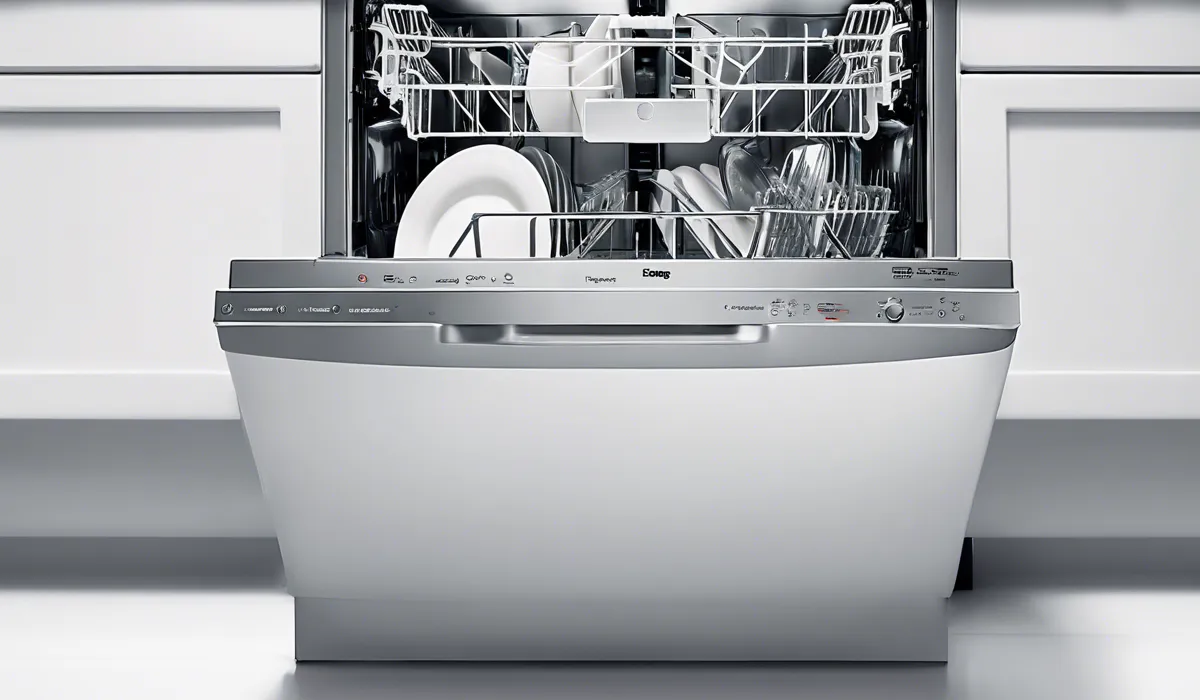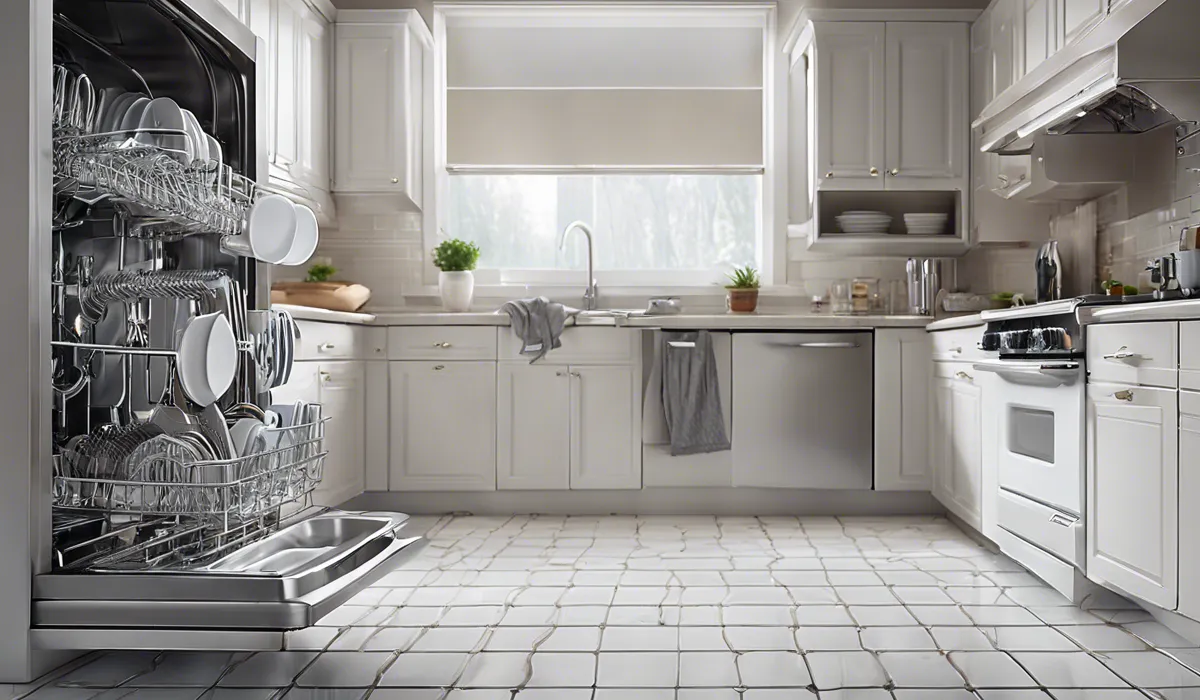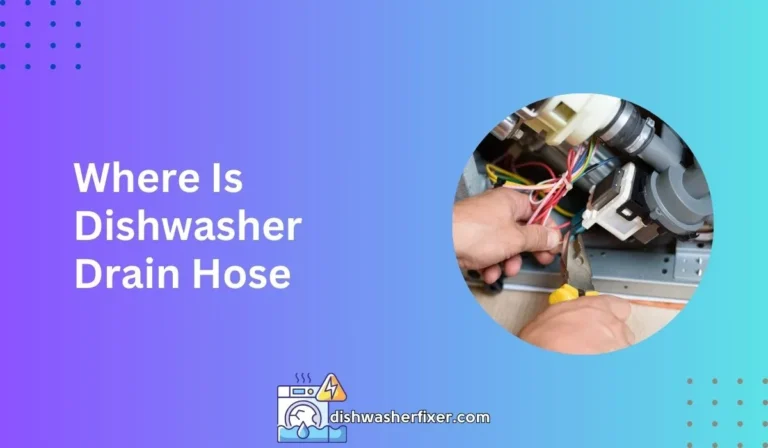How to Drain Dishwasher GE: Quick & Easy Steps
To drain a GE dishwasher, first, turn off the power. Open the bottom panel, locate the drain hose, and detach it from the sink or garbage disposal. Clear any blockages. Elevate the hose and direct it into a bucket to drain. Reattach securely after draining.
Understanding the Basics of Your GE Dishwasher

Identifying the Model of Your GE Dishwasher
Before attempting any maintenance on your GE dishwasher, it is crucial to identify the specific model. This information can be found on the inside door panel or on the back of the appliance.
Knowing your model number allows you to find the correct manual and understand the unique features and parts that might need attention.
Locating the Drain and Components Involved in Water Removal
The drain system in a GE dishwasher typically consists of a drain hose, a drain pump, and a filter. These components work together to remove water from the dishwasher.
The drain hose usually runs from the dishwasher pump to the sink drain or garbage disposal. Proper location and handling of these parts are crucial for effective drainage.
The Role of the Drain Pump and Filter
The drain pump is an essential component that pushes water from the dishwasher into the drain hose.
The filter, located inside the dishwasher, catches large food particles and debris to prevent clogs.
Regular cleaning of the filter is necessary to maintain the efficiency of your dishwasher’s drainage system.
Steps to Manually Drain Your GE Dishwasher

Safety First: Disconnect Power and Turn Off Water Supply
Before starting any maintenance, ensure your safety by disconnecting the dishwasher from the power supply and turning off the water. This reduces the risk of electric shock and water leakage while you work on the appliance.
Removing Standing Water from the Dishwasher Basin
If there is standing water in the bottom of your dishwasher, you will need to remove it manually. Use a cup or similar container to scoop out the water and then use a towel to soak up any remaining moisture.
Accessing and Cleaning the Filter and Sump Area
Once the water is removed, you can access the filter and sump area, typically located at the bottom of the dishwasher.
Remove the filter and clean it thoroughly under running water. Check the sump area for debris that could cause clogs and clean it out as needed.
Checking and Cleaning the Drain Hose
Next, locate the drain hose connected to the sink or garbage disposal. Detach the hose and clear any clogs or obstructions.
Make sure to elevate the hose and direct it into a bucket to encourage drainage. Reattach the hose securely after ensuring it is clear.
Inspecting the Drain Pump for Clogs or Malfunctions
Inspect the drain pump for any signs of clogs or malfunctions. If you are comfortable doing so, remove the pump to check for debris.
If you notice any damage or if the pump is not functioning correctly, it may need to be replaced.
Troubleshooting Common Drainage Issues

Dealing with a Clogged Drain Hose
A clogged drain hose is a common issue that can prevent your dishwasher from draining properly. Remove the hose and run water through it to clear any clogs.
If the clog persists, you may need to use a plumber’s snake or a similar tool to dislodge the blockage.
Handling a Malfunctioning or Noisy Drain Pump
If your drain pump is making unusual noises or not working at all, it may be malfunctioning.
Check for any obstructions in the pump and ensure it is properly seated. If the pump continues to malfunction, it may need professional repair or replacement.
Tips for Maintaining Clear Drainage Pathways
To prevent future drainage issues, regularly clean the filter and ensure the drain hose is not kinked or obstructed.
Avoid putting large food particles and non-dishwasher-safe items in the appliance, as these can cause clogs.
When to Seek Professional Assistance for Your GE Dishwasher Drainage Problems
If after following these steps your dishwasher still has drainage issues, it may be time to seek professional assistance.
A certified technician can diagnose and resolve complex problems that might be beyond the scope of DIY repairs.
FAQs About Draining a GE Dishwasher
How do I start the process of draining my GE dishwasher?
To begin draining your GE dishwasher, ensure that the power to the unit is turned off for safety.
Where is the drain hose located on my GE dishwasher?
The drain hose is typically located behind the bottom front panel of the dishwasher. You may need to remove the panel to access it.
What should I do if I find a blockage in the drain hose of my GE dishwasher?
If you find a blockage, carefully remove the debris from the hose to clear the pathway and allow the dishwasher to drain properly.
How do I drain the water from the GE dishwasher hose?
Elevate the hose above the dishwasher’s water level and direct it into a bucket to allow the water to drain out by gravity.
After draining my GE dishwasher, how do I reattach the drain hose?
Once the water has been drained, reattach the drain hose to the sink or garbage disposal, ensuring it is secure to prevent leaks.
Final Thoughts
Draining a GE dishwasher involves safety first by turning off the power. Access the drain hose by opening the bottom panel.
Detach the hose from its connection to the sink or garbage disposal and check for clogs.
To empty the water, elevate the hose above the dishwasher’s level and let it flow into a bucket. Once done, ensure the hose is reattached securely to prevent leaks.
Useful Resources
- https://case.edu/housing/sites/default/files/2019-04/Village%20Dishwasher.pdf
- https://housing.illinoisstate.edu/downloads/cardinalcourt/dishwasher.pdf
- https://www.energystar.gov/sites/default/files/asset/document/Commercial%20Dishwashers%20Version%203.0%20Specification%20%28Rev.%20-%20May%202021%29_0.pdf





